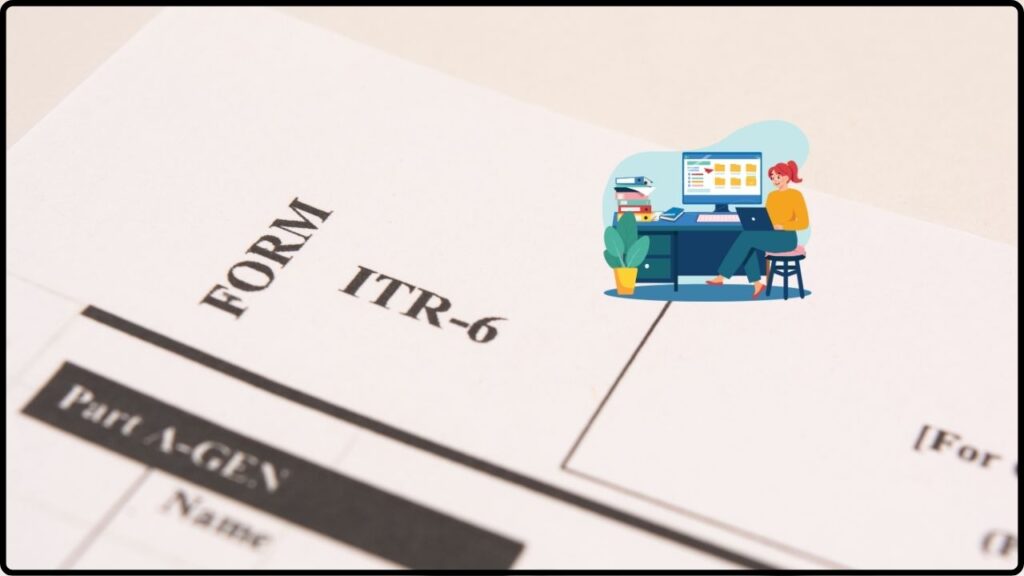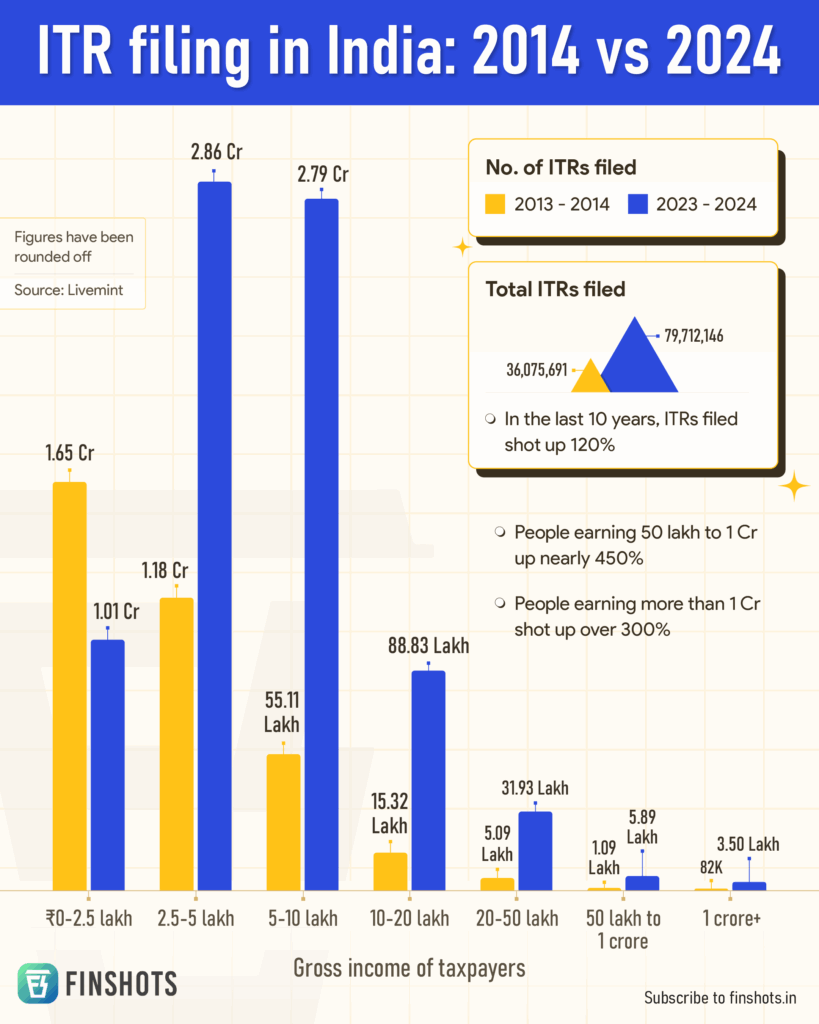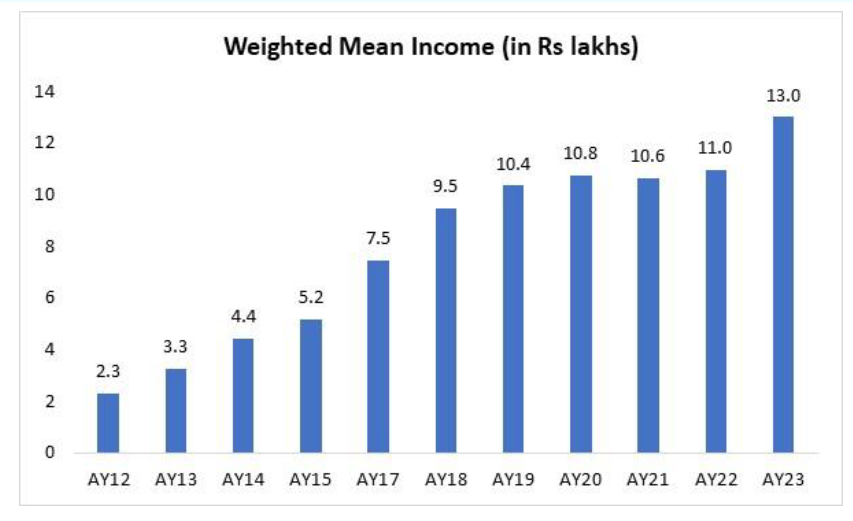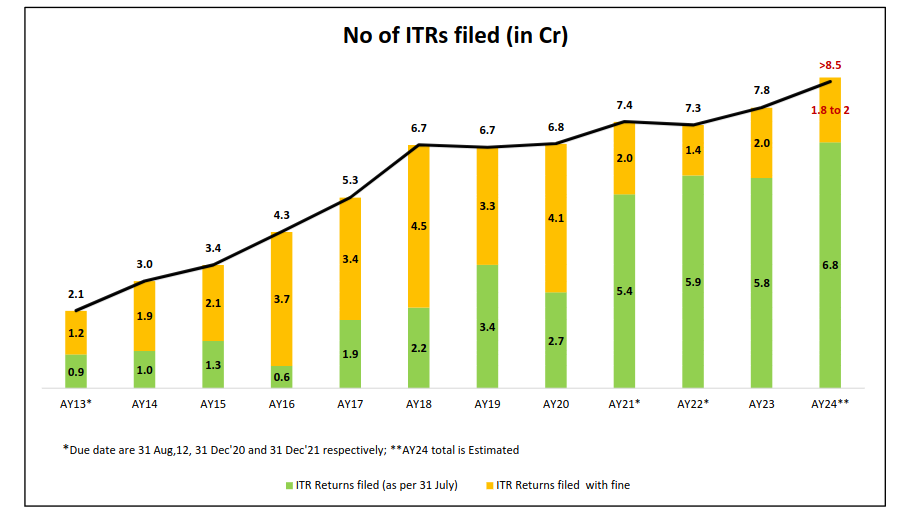ITR-6 Excel Utility: The ITR-6 Excel Utility for AY 2025–26 has been released by the Income Tax Department of India, and if you own a company, this update directly affects you. Whether you run a Private Limited Company, Public Limited Company, or a One Person Company (OPC), you may be required to file ITR-6 this year. Released on August 14, 2025, this Excel-based utility allows businesses to file their Income Tax Returns for the Financial Year 2024–25. But here’s the kicker: the deadline is September 15, 2025—leaving companies with just a month to complete the process. Compare this with the United States, where businesses generally have months in advance to prepare for the April 15 IRS deadline. Indian businesses, in contrast, are working against the clock.
ITR-6 Excel Utility
The ITR-6 Excel Utility for AY 2025–26 may have been released late, but the responsibility is clear: companies must file by September 15, 2025. This form is essential for compliance, and penalties for late or incorrect filing can be costly. Treat it like your annual performance review—accurate reporting protects your company’s reputation and avoids legal trouble. Start early, coordinate with your CA, and ensure you’re on the right side of the law.

| Point | Details |
|---|---|
| Release Date | August 14, 2025 |
| Assessment Year | 2025–26 (FY 2024–25) |
| Filing Deadline | September 15, 2025 |
| Who Must File? | Companies registered under the Companies Act, except those claiming Section 11 exemption |
| Exemptions | Charitable/religious trusts (file under ITR-7) |
| Official Download Link | Income Tax India Portal |
| Filing Mode | Excel Utility (offline preparation, upload online) |
| Audit Report Deadline | September 30, 2025 |
What Is ITR-6?
ITR-6 is an Income Tax Return form specifically for companies registered under the Companies Act, 2013, except those eligible for exemption under Section 11 of the Income Tax Act (charitable/religious trusts).
Unlike ITR-1 (meant for salaried individuals) or ITR-4 (for presumptive taxpayers), ITR-6 dives deep into corporate finances. It captures information such as:
- Business income and expenses
- Capital gains from sale of assets or shares
- Depreciation schedules for machinery and property
- Deductions under Chapter VI-A (like Section 80C, 80G contributions)
- Audit reports in case turnover crosses prescribed limits
Think of it as the corporate version of a report card. Just as students submit results annually, companies must submit ITR-6 to prove compliance with the law.
Why the 2025 Release Is Crucial?
- Short window – The utility was released mid-August, leaving little time before the September 15 deadline. Many companies are scrambling to get their books audited, financials validated, and returns uploaded.
- Audit mismatch – Auditors file reports by September 30, but ITR must be filed earlier. Companies will have to coordinate faster.
- New disclosures – This year’s ITR-6 introduces stricter reporting for capital gains, LTCG relief, and asset thresholds, increasing complexity.
- Portal issues – Past years saw glitches and slowdowns near deadlines. A delayed release increases risks of filing errors.

Who Needs to File ITR-6?
- Required:
- Companies registered under the Companies Act (Private Limited, Public Limited, OPCs).
- Businesses earning taxable income not exempt under Section 11.
- Not required:
- Charitable/religious trusts (file ITR-7).
- Individuals, HUFs, LLPs, partnerships (file ITR-1 through ITR-5 depending on income type).
If your company is neither a charity nor a religious trust, chances are ITR-6 is mandatory.
ITR-6 vs. Other ITR Forms
| ITR Form | Who Uses It? | Key Notes |
|---|---|---|
| ITR-1 (Sahaj) | Individuals with salary income and one house property | Simplest form |
| ITR-2 | Individuals/HUFs with capital gains or multiple properties | For investors |
| ITR-3 | Individuals/HUFs with business or professional income | For professionals |
| ITR-4 (Sugam) | Small businesses and presumptive income taxpayers | Simplified return |
| ITR-5 | LLPs, partnerships, cooperative societies | Non-company entities |
| ITR-6 | Companies (except Section 11 entities) | Corporate tax return |
| ITR-7 | Trusts, political parties, institutions | For exempt entities |
This comparison ensures clarity for businesses deciding which form applies.
Step-by-Step Guide: Filing ITR-6 Excel Utility
- Download the Utility
Go to the Income Tax India official portal. - Enable Macros
Macros must be enabled in Excel, or the form won’t validate correctly. - Enter Basic Company Details
PAN, company registration, address, directors, and business codes. - Fill in Financial Data
Include business profits, capital gains, expenses, depreciation, and deductions. - Attach Audit Report
If turnover exceeds limits, your CA uploads Form 3CA/3CD. - Validate the Return
Use the built-in “Validate” button to check for errors. - Generate XML File
The utility will create an XML file for uploading. - Upload on E-Filing Portal
Log in with company PAN, upload the file, and submit. - E-Verify
Returns must be verified using a Digital Signature Certificate (DSC), Aadhaar OTP, or net banking. For companies, DSC is mandatory.

Case Example
Let’s consider XYZ Pvt. Ltd. with:
- Turnover: ₹90 lakh
- Capital gains: ₹5 lakh (from sale of shares)
- Depreciation: ₹3 lakh (machinery)
Steps they follow:
- Prepare accounts, validate depreciation, and capital gains schedules.
- Auditor uploads Form 3CD.
- Company generates XML file, uploads via portal.
- E-verifies with DSC.
If they miss the deadline, they face a penalty of ₹5,000 under Section 234F plus interest.
Penalties and Legal Consequences
- Late filing penalty: ₹5,000 (₹1,000 if total income < ₹5 lakh).
- Interest: Under Section 234A, 234B, 234C for delayed payment of taxes.
- Non-filing: Risk of scrutiny and prosecution under Income Tax Act.
- Reputational damage: Investors, banks, and regulators review tax compliance history.
Impact of ITR-6 on Business Compliance and Growth
Filing ITR-6 is not just about avoiding penalties—it also strengthens a company’s credibility. Timely tax compliance plays a big role in:
- Securing business loans and credit lines – Banks often request past ITR acknowledgments before approving funding. A company that consistently files ITR-6 on time demonstrates financial discipline.
- Attracting investors – Venture capitalists and angel investors review tax compliance to gauge risk before investing. Non-compliance can reduce your company’s valuation.
- Participating in government tenders – Many government contracts require proof of tax return filings for eligibility.
- Ease of doing business – Transparent reporting makes mergers, acquisitions, and even business exits smoother.
Think of it this way: filing ITR-6 is like keeping your business report card clean. It helps your company look attractive to banks, investors, and even potential partners.

Digital Transformation in ITR Filing: What’s New in 2025?
The Income Tax Department has steadily moved towards digital-first filing, making the process easier and faster. Here’s what’s new in 2025:
- AI-driven error checks – The Excel utility now has enhanced error-flagging tools, reducing the chances of filing mistakes.
- Integration with GST data – For companies registered under GST, some data auto-populates, reducing manual entry.
- E-verification upgrades – More banks are now linked to the e-verification system, giving companies multiple ways to authenticate returns.
- Mobile notifications – Companies receive SMS and email alerts for deadlines, form updates, and verification reminders.
This is part of India’s broader Digital Tax Governance initiative, aiming to reduce human error, improve transparency, and make compliance faster. In a way, it mirrors the IRS’s e-file system in the U.S., which has been in place for decades and is considered global best practice.
Practical Tips for Smooth Filing
- Start early—avoid last-minute rush.
- Coordinate with auditors well before September 15.
- Save all XML and Excel files for at least six years.
- Keep track of CBDT notifications; forms are sometimes revised.
- Always cross-check PAN, TAN, and business codes to avoid rejection.
Expert Insights
Tax professionals recommend:
- Don’t rely on auto-fill alone—cross-check figures with audited financials.
- Be careful with capital gains schedules—even small errors can flag scrutiny.
- Digital Signature Certificate must be valid—renew early if expiring.
ITR-6 Excel Utility Released – Check If You Need to File This Year
ITR Refund Delayed? Here’s Why It’s Taking Longer and How You Can Track Your Status
2025 Tax Slabs Revealed: Find Out How Much You’ll Really Pay










